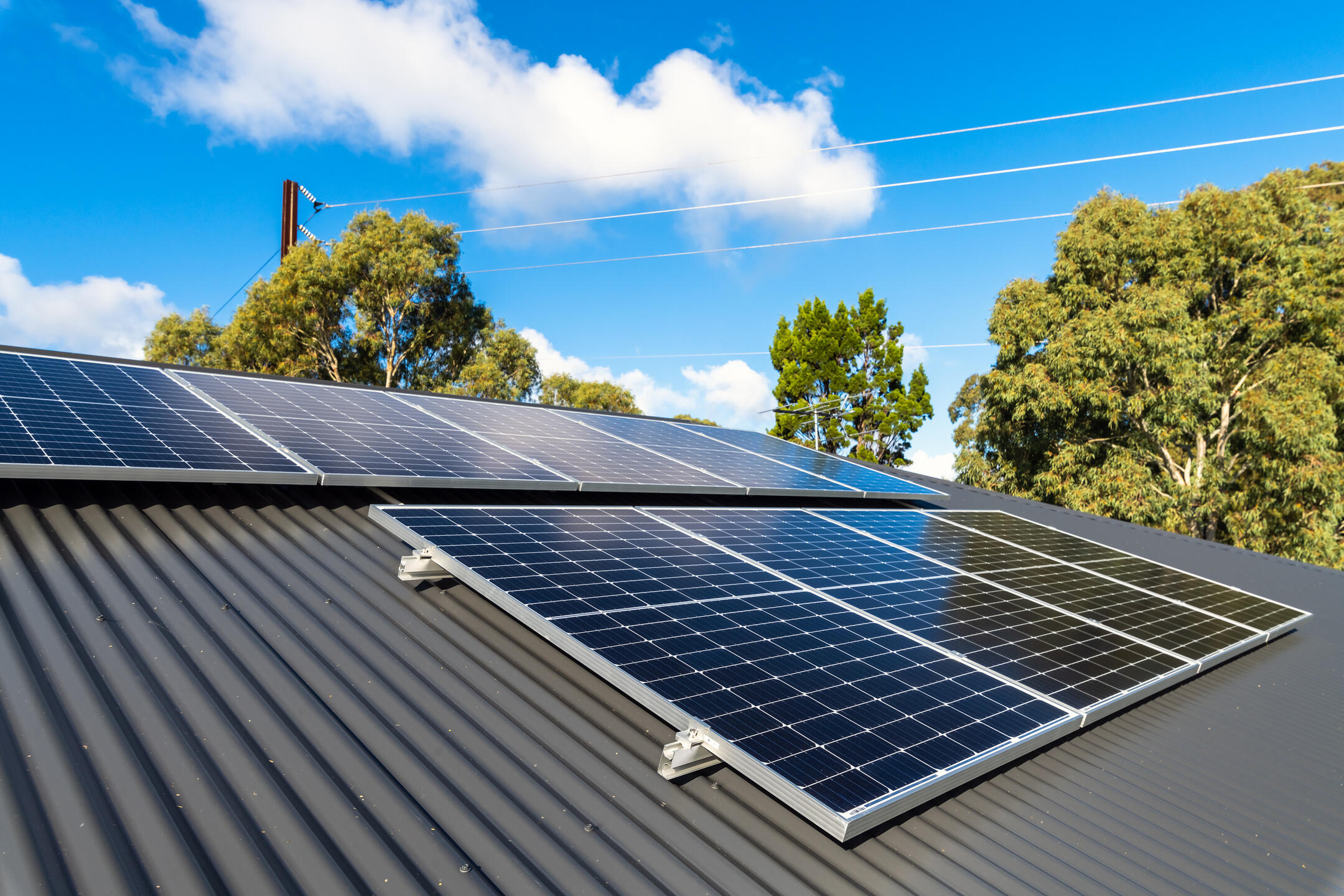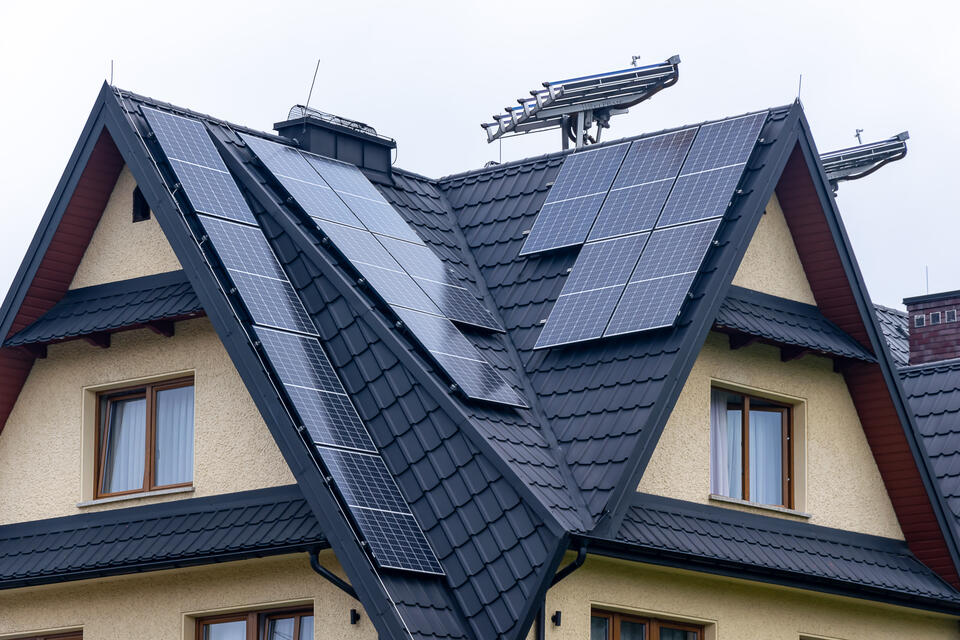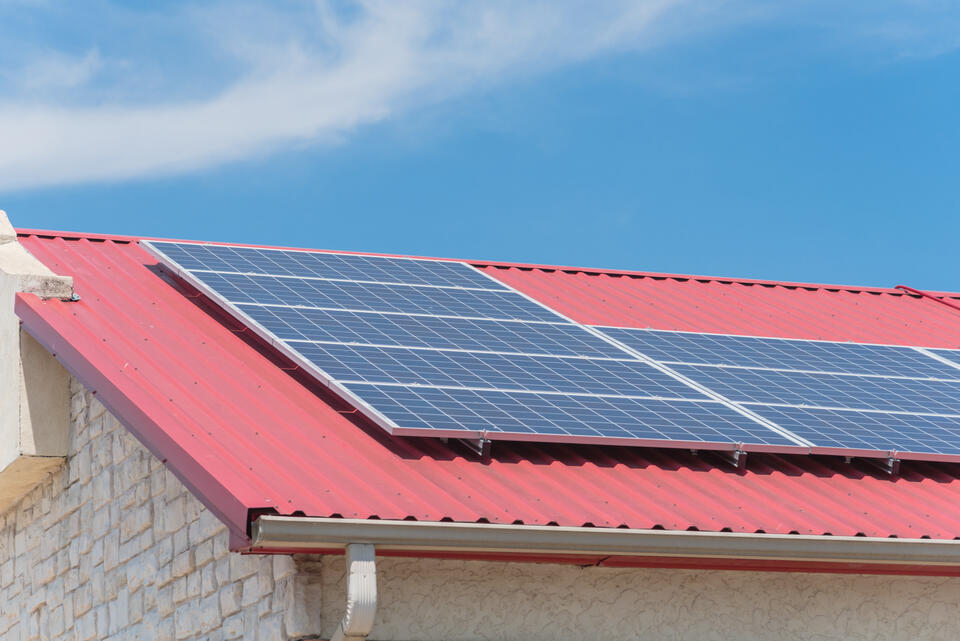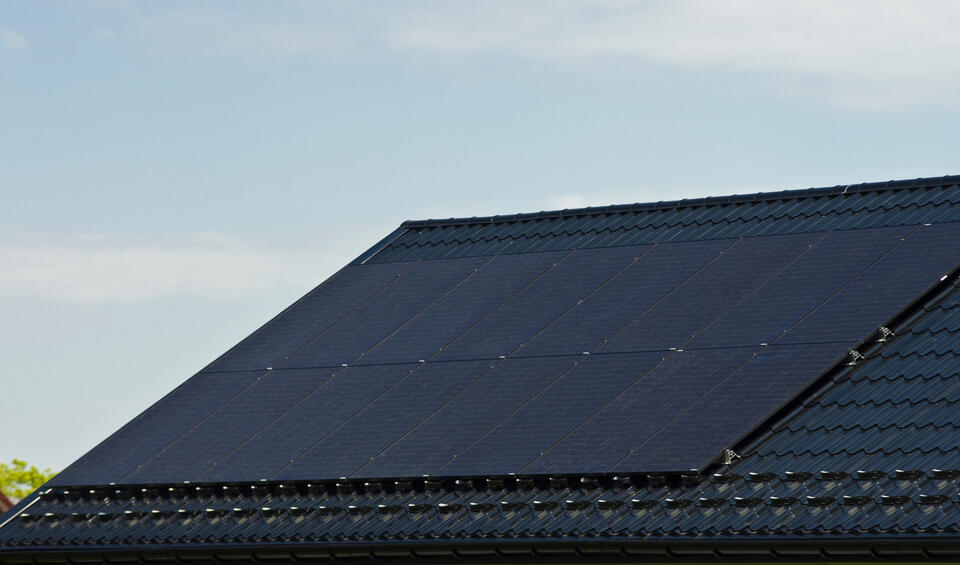Installing Solar Panels On Metal Roof (6 Step Guide)
 Written by : Secured Roofing & Solar
Written by : Secured Roofing & Solar
 7 minutes read
7 minutes read


Solar energy is more accessible than ever, and homeowners are jumping on the opportunity to harness this renewable resource. One common concern is how to efficiently install solar panels on a metal roof. Metal roofs are durable, long-lasting, and perfect for solar installations. In this comprehensive guide, we’ll walk you through everything you need to know about solar panels on metal roof materials, including:
- The benefits of installing solar panels on metal roofs
- Different types of metal roofs and their compatibility with solar panels
- 6 step guide to installing solar panels
- Maintenance tips for solar panels on metal roofs
🤔 Understanding Solar Panels on Metal Roofs

Metal roofs are gaining popularity due to their durability and energy efficiency. They can withstand harsh weather conditions, including heavy rain, strong winds, and even hail. This makes them ideal for supporting solar panels, which require a stable foundation.
Metal roofing materials are recyclable, adding to their appeal for environmentally conscious homeowners. They also have a high solar reflectance, which can reduce cooling costs in the summer, making them a perfect partner for solar panels.
Additionally, because metal roofs have a long lifespan, they align perfectly with the longevity of solar panels, which typically last about 25 to 30 years.
The Advantages of Solar Panels on Metal Roofs
Combining solar panels with a metal roof provides several advantages:
- Easy Installation: The smooth surface of a metal roof facilitates straightforward installation and maintenance of solar panels.
- Seam Mounting: Solar panels can often be mounted directly onto the seams of the metal roof, eliminating the need for drilling holes.
- Leak Prevention: This unique installation method reduces the risk of leaks and ensures a more secure attachment.
- Financial Benefits: The energy savings from solar panels can help offset the initial cost of both the panels and the metal roof, leading to long-term financial advantages.
Environmental Impact
Installing solar panels on metal roofs is more than just a smart financial decision; it’s also a step towards sustainability. Metal roofs, combined with solar panels, can significantly reduce a home’s carbon footprint by lowering dependency on non-renewable energy sources.
In doing so, you contribute to reducing greenhouse gas emissions and promoting clean energy. With increasing global awareness of environmental issues, making such eco-friendly choices can add value to your property.
👉 Types of Metal Roofs
Understanding the types of metal roofs is crucial for making informed decisions about durability, aesthetics, and energy efficiency. Choosing the right metal roofing material can significantly impact the longevity of your roof and the overall value of your property.
Standing Seam Metal Roofs
Standing seam metal roofs are the most popular choice for solar panel installations. Their design features raised seams where the panels can be securely attached without piercing the roof’s surface. This results in a watertight, secure installation ideal for solar panels.
Additionally, the vertical seams provide a convenient channel through which wiring can run, maintaining the roof’s aesthetics. Standing seam roofs are an excellent choice for homeowners seeking a modern look and efficient solar panel installation.
Corrugated Metal Roofs
Corrugated metal roofs, characterized by their wavy pattern, present a slightly different challenge. While they are durable and cost-effective, special mounting brackets are necessary to attach solar panels securely.
These brackets ensure that the panels are elevated above the roof, preventing any potential water runoff issues. Despite the extra step in the installation process, corrugated metal roofs remain a viable option for solar panels.
Metal Shingles
Metal shingles mimic the appearance of traditional asphalt shingles but offer the benefits of metal. They provide an aesthetically pleasing option for homeowners who prefer a classic look.
When installing solar panels on metal shingles, additional care must be taken to ensure the panels’ weight is evenly distributed. This type of installation may require more specialized equipment, but it remains an attractive option for those looking to blend style with sustainability.
🛠️ 6 Steps to Installing Solar Panels

Installing solar panels is crucial for harnessing renewable energy, reducing electricity bills, and minimizing environmental impact. By making the switch to solar, homeowners can contribute to a more sustainable future while enjoying long-term savings.
1. Evaluate Your Roof
Before diving into the installation of solar panels, it’s crucial to thoroughly assess the condition and structure of your metal roof. Look for signs of wear and tear, such as rust, loose panels, or any structural weaknesses. Additionally, consider the angle and orientation of your roof, as these factors can significantly impact the efficiency of solar energy capture. Ensure there is enough unobstructed space to accommodate the solar panels without any shading from nearby trees or buildings, which can hinder performance.
2. Choose the Right Mounting System
Selecting the appropriate mounting system is vital for the successful installation of your solar panels. Different types of metal roofs require specific solutions. For standing seam roofs, a seam clamp system is ideal as it allows for secure attachment without penetrating the roof surface, minimizing the risk of leaks. On the other hand, corrugated roofs may require specialized brackets that fit securely into the ridges of the roofing material. Research and consult with professionals to determine the best mounting option that aligns with your roof type and local building codes.
3. Secure the Mounting Hardware
Once you’ve selected the mounting system, it’s time to attach the mounting hardware to your roof. Follow the manufacturer’s instructions meticulously to ensure proper installation. Utilize the appropriate tools and safety gear, and consider enlisting help if you’re uncomfortable working at heights. Ensuring the hardware is properly secured is crucial, as it will provide the foundation for your solar panels to withstand strong winds, heavy snow, and other weather conditions.
4. Install the Solar Panels
With the mounting system secured, carefully place the solar panels onto the structure. It’s essential to align and secure them properly to maximize their exposure to sunlight and optimize energy capture. Take your time during this step; improper installation can lead to decreased efficiency or damage to the panels. Use a level to ensure that everything is straight and secure the panels according to the mounting system’s guidelines.
5. Connect the Wiring
Connecting the solar panel wiring to your home’s electrical system is a critical step that requires attention to detail. Ensure you follow all safety protocols and local electrical codes while making these connections. Typically, this involves connecting the solar panels to an inverter, which converts the direct current (DC) generated by the panels into alternating current (AC) for use in your home. It’s essential to verify that all connections are tight and insulated to prevent any electrical issues or energy loss.
6. Test the System
After the installation is complete, conduct a thorough test of your solar panel system. Start by checking all electrical connections for security and any signs of wear. Monitor the energy output using your inverter’s display or a monitoring system, ensuring that it aligns with your expectations based on the size and capacity of your installation. This testing phase is crucial for identifying any potential issues early on, allowing for adjustments or repairs to ensure optimal performance of your solar energy system.
💡 Maintenance Tips

Regular maintenance is crucial to ensure the longevity and optimal performance of equipment or systems. It helps prevent unexpected breakdowns and costly repairs, ultimately saving time and money.
- Regular Inspections: Regular inspections are essential to ensure your solar panels and metal roof remain in top condition. Check for any signs of wear or damage, especially after severe weather.
- Cleaning: Keep your solar panels clean to maximize their efficiency. Dust, dirt, and debris can accumulate on the panels and reduce their energy output. Regular cleaning ensures optimal performance.
- Professional Maintenance: Schedule professional maintenance at least once a year. Professionals can identify potential issues and provide solutions before they become major problems.
🙌 Maximize Energy Efficiency with Solar Panels
Installing solar panels on a metal roof is a smart investment for any homeowner looking to increase energy efficiency and reduce their carbon footprint. By understanding the benefits, types of metal roofs, and proper installation techniques, you can make an informed decision that benefits both your home and the environment. Trust Secured Roofing and Solar for a professional and reliable solar panel installation experience. Don’t wait—contact us today to get started on your solar journey!
Explore Our Latest Articles
Celebrate Your Home
